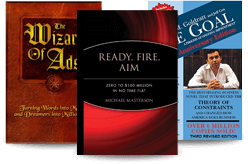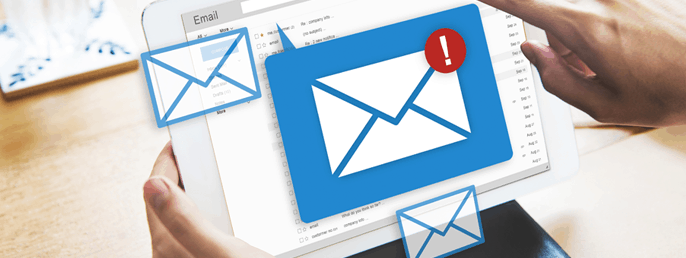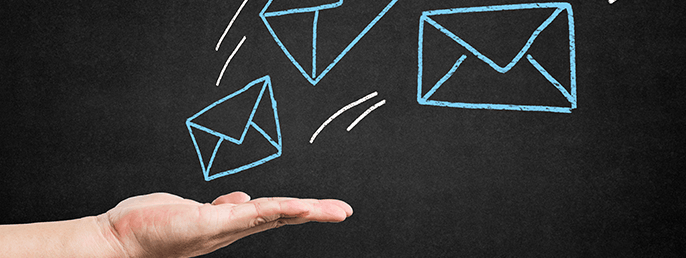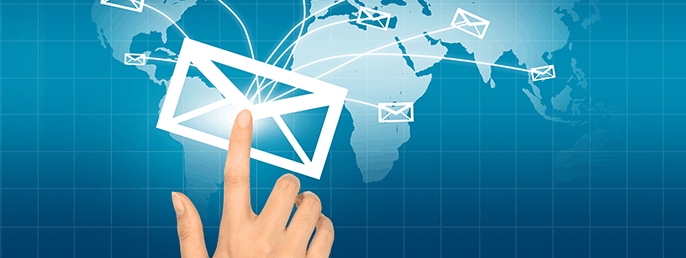Email Marketing Success Strategies Revealed with Co-Founder of Digital Marketer Richard Lindner

Books Mentioned:

Related Episodes:
-
140. Andre Chaperon — Email Marketing Genius And Creator of AutoResponder Madness
-
104. Taking Leadership or Giving Leadership? Which Makes You A Better Leader?
EMAIL MARKETING HACKS

How to build an engaged email list — Email List Hygiene
Hint: Less is more.
The size of your email list doesn’t matter as much as how engaged your email list is.
Don’t measure the size of your list. Measure the effectiveness of your list.
Measure the extent to which your readers engage with your emails. Some metrics you might want to consider include open rates and click-through rates.
Here’s the paradox: Continuing to email an unengaged mailing list means your engaged users are likely to receive less of your emails.
You need to know when a user becomes, or a reader becomes unengaged. You then have to trigger a specific re-engagement campaign.
What happens if they still don’t engage?
You stop talking to them!
When someone tells me they don’t have enough traffic coming to their website, I often counter it with this question: “how engaged is the traffic on your website?”
Here’s what happens ‘behind the scenes’ when you send out an email:

How Email Providers Like Gmail or Yahoo Mail Decide On Whether Your Emails Get Read
Email services like MSN, Yahoo, and Google, allows the first few thousand emails to randomized email addresses through, to see what the engagement rates are like.
Then they pause and measure:
Positive engagement mechanisms like:
- The percentage opens
- The percentage that marks the email as important
- The percentage that scrolls through the email and read through it
- The percentage that moves it to another folder
Negative engagement mechanisms like:
- Unsubscribe percentages
- The percentage that deletes the email without opening it
- The percentage that archives the email without opening it
Based on these measurements, they give you a ‘grade’.
The rest of the emails from that sender with that subject line are delivered based on that grade.
A good grade means they ‘open the email floodgates’ nice and wide and let the emails through.
If the grade isn’t good, they throttle your delivery and send a high proportion of your emails straight to the spam filter.
From the email service provider’s perspective (like MSN, Yahoo and Gmail) things are simple. They’re trying to give their email recipients the best possible experience. If your emails aren’t engaging, then they will send you to the spam or the promotions folder.
They will not show it to their users because of they want to protect their users from spammy or highly promotional emails.

Email Marketing Broadcasts — How Frequently Should You Email Your List?
I often get asked this question: “How frequently should I email my list?”
Of late, I’ve realized that’s the wrong question.
A better question to ask is: How am I adding value to my email list?
Here’s why this is a better question to ask. Because when you ask how am I adding value to my list, you’re more likely to think of it from your customer’s perspective. Your frequency is completely determined by the utility of your emails.
If you’re emailing them every day and your customer’s waiting with bated breath to read what you have to say, then great! Email them every day!
On the other hand, if you email them only once every 6 months and they’ve forgotten who you are, then chances are they will mark your email as spam because they’ve forgotten they even subscribed to you.
The point is, you’ve got to figure out the frequency for yourself through trial and error. And to a significant extent, the optimum frequency is determined by what’s most valuable to your audience.
For me, the ideal frequency currently appears to be about once a fortnight, but I’m constantly testing to see what’s working.
Which brings me to my next point … measurement

Email Engagement — How Do You Measure It?
Decide on your high-value segments based on measurable behaviors. For example, you might see that a customer tends to make a purchase after having opened 3 consecutive emails and having clicked on at least 2 links within those 3 emails.
You now have a metric that is a predictor of success in terms of conversions. If a person has opened 3 emails and clicked on 2 links it’s likely they’re primed for purchasing one of your products.
This presents a good opportunity to make them an offer.
A word of caution though: don’t make the mistake of assuming your customers can be broken down to a metric.
It’s critical that you remember there’s a living human person on the other end of that email. It’s important to afford them the courtesy and respect you’d like afforded to you.
I’ve seen several marketers treat their subscribers like another ‘metric’ which is a terrible mindset with which to approach email marketing.
That said, you can move forward with more purpose when you know your email subscriber is most likely ready to become a customer.
Now, what happens if they don’t become a customer? Well, you move the conversation down a notch and continue to offer them useful content that helps them on their journey until they’ve reached a point when they’re ready to consider purchasing from you again.
Email Content — What’s useful content?
In some ways that’s like asking “how long is a piece of string”.
But if you put my feet to the fire and asked me that question I’d have to say useful content has a specific purpose and solves a problem for your reader. It delivers a result in the reader’s life. A transformation.
And how do you know if it solves a problem for your reader?
Well … if they’ve been engaging with your emails by opening your emails and clicking on links then it means you’re solving a problem. So always use that as your guide.

Email Marketing — A Useful Tagging Strategy
The next step is to get clear on your tagging strategy.
Here’s a tagging strategy I use:
If someone opts into my list I tag that person’s email address within my email provider (active campaign) to let myself know where they entered my funnel. i.e. which specific episode they opted in on.
I also have each episode mapped to a specific content type. So that person gets tagged with a second tag which tells me what sort of content they’re interested in.
Now I know where they’ve entered my funnel and what kind of content they’re interested in.
So the next step is to keep sending them content about that topic (with links to other topics to gauge their level of interest on other topics I might want to talk about in the future)
If they click on those links then I tag them with another tag telling me the second topic they’re interested in hearing more about.
This allows me to stay relevant in their inbox.
Key Points and Insights (including timestamps for audio version only):
4:57 – Richard’s introduction to entrepreneurship8:51 – The elephant in the room: Declining email engagement, the rise of the chatbots and lots more
10:14 – Email list hygiene. It’s not the size of your list it’s the engagement that matters
11:20 – It’s dangerous to measure your email based on the size of your list
13:19 – How the email services grade your emails and why that matters to you
14:39 – The optimum frequency at which you should be sending emails to your list
15:40 – Andre Chaperon’s tagging strategy
16:13 – How Digital marketer approaches engagement based segmentation
16:56 – Richard shares his thoughts on Andre Chaperon’s work
17:58 – How Digital Marketer measures and tracks their email marketing
18:29 – How Digital Marketer identifies a high-value segment in their list
19:03 – Why and how to identify high-value segments
22:32 – Return path certification explained and why it might be worth considering for your business
24:08 – How the act of monitoring opens, unsubscribes, complaints helps you predict pacing
25:59 – How to use your email metrics to read the mind of your audience like a book
27:09 – Most of the time we’re so hung up on metrics we don’t ascribe intent to the metrics
28:11 – Why you MUST have a hypothesis around what you expect to happen for your testing and metrics to be useful
30:55 – The difference between transformational leadership and transactional leadership
32:40 – The value of sharing the goal but also the context and reasoning behind the goal when working with your team
34:33 – Action steps
Identify the high-value segments
Engage the high-value segments by sending out splinter content
If they do engage then make an offer
If they don’t engage then put them onto a nurture sequence
36:05 – How to learn from failures (the importance of having a hypothesis)
36:36 – An alternative way to look at failure
37:15 – Useful tools mentioned: Mail monitor app and return path certification
37:39 – How to indoctrinate your subscribers
Introduce your subscribers to your personality or your brand’s personality
38:36 – Align your brand with a common enemy or with a common vision
39:05 – Bounce your new subscribers to your social channels
Tell them what to do but offer them a benefit to following that instruction
40:20 – Tell them what you believe in
40:34 – Show them your best content
41:20 – How to re-engage your subscribers with a re-engagement campaign
44:16 – How to write better emails (how to become a better copywriter)
44:50 – Useful books to improve your copy writing abilities
45:27 – If you want to get the email certification a free try

